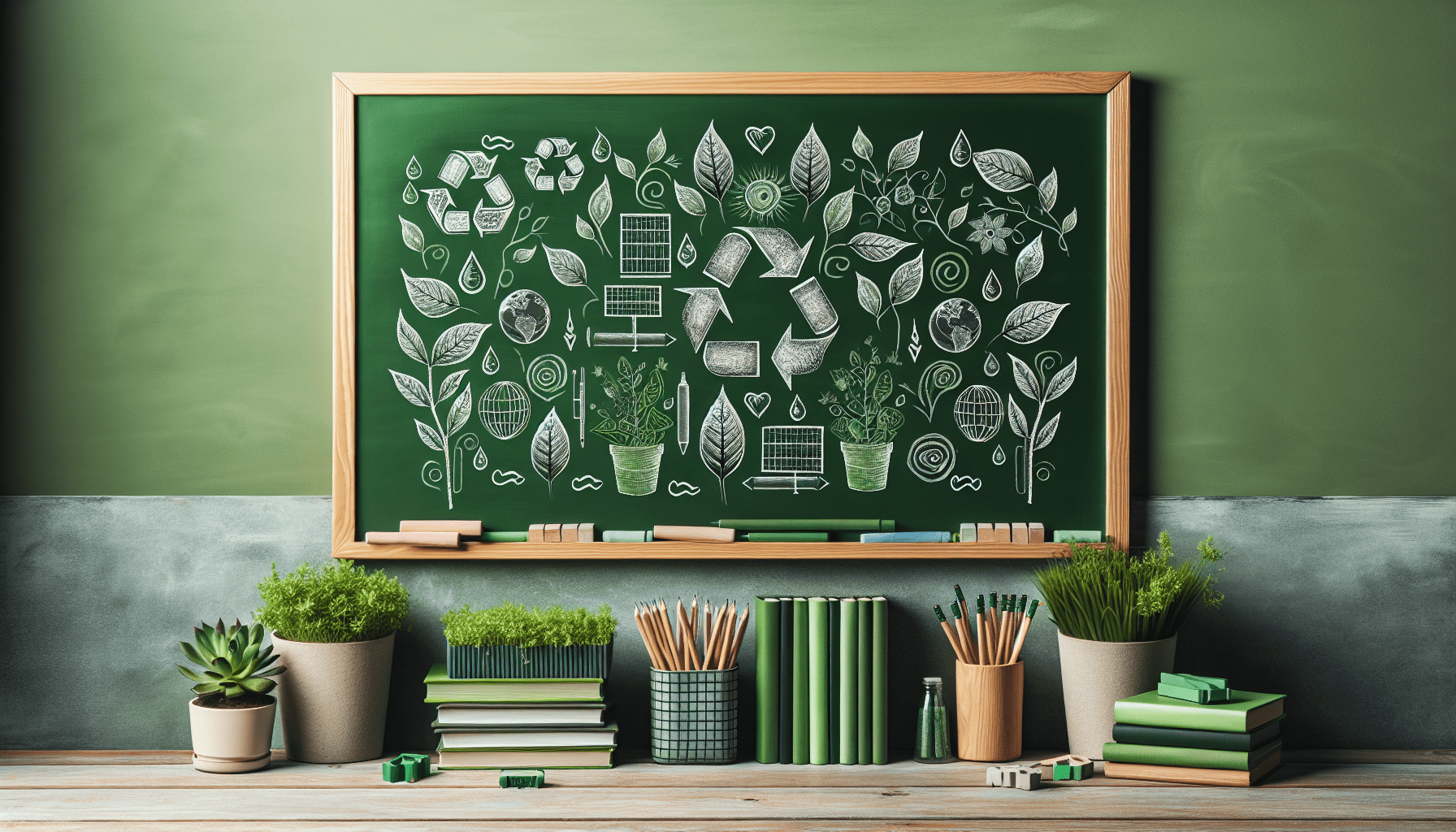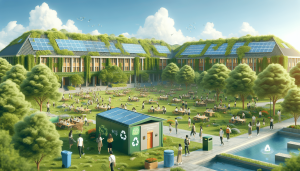How can we create an eco-friendly curriculum? This question might leave us pondering considering the enormous environmental challenges our world faces today. However, it’s not as daunting as it sounds. Together, we can embark on this journey to devise a curriculum that not only imparts knowledge but also encourages sustainable living.
We might be asking ourselves, why focus on an eco-friendly curriculum? The answer lies in the undeniable fact that our choices today will shape the world our children inherit. By integrating eco-friendly principles into our educational frameworks, we can instill a sense of responsibility and environmental consciousness in our students.
Understanding an Eco-friendly Curriculum
What Makes a Curriculum Eco-friendly?
An eco-friendly curriculum is one where sustainability is woven into every aspect of teaching and learning. This isn’t just about lessening the environmental footprint but also about fostering an understanding and respect for our planet. We’ll incorporate lessons on conservation, recycling, and the impact of human activities on the Earth, among other things.
Why It’s Important
The importance of an eco-friendly curriculum cannot be overstated. It equips students with the knowledge and skills needed to address environmental challenges. More than that, it cultivates a mindset geared toward sustainability, encouraging lifelong habits that benefit the planet.
Steps to Develop an Eco-friendly Curriculum
1. Assessing Current Curriculum
The first step in creating an eco-friendly curriculum is assessing the current one. We should identify areas where environmental themes are already present and areas where they can be integrated. This involves reviewing lesson plans, teaching materials, and school activities.
2. Including Sustainability Goals
Incorporating sustainability goals is crucial. These goals should align with broader educational objectives and the school’s mission. Examples include reducing waste, conserving energy, and promoting biodiversity.
3. Engaging Stakeholders
Engagement with all stakeholders—teachers, students, parents, and the community—is essential. We need to ensure everyone is on board and understands the value of an eco-friendly curriculum. Regular meetings and discussions can help align everyone’s perspectives and roles.
4. Integrating Environmental Themes Into Subjects
We can integrate environmental themes across various subjects. For example, in science, we could focus on ecosystems and renewable energy. In social studies, we might explore the impact of human activities on the environment. Even art classes can incorporate recycled materials.
5. Using Eco-friendly Materials
Teaching materials should also reflect our commitment to sustainability. This includes using recycled paper, non-toxic supplies, and digital resources. It’s also beneficial to encourage students to use and create sustainable materials.
| Subject | Example of Eco-friendly Integration |
|---|---|
| Science | Studying renewable energy, ecosystems, and climate change |
| Social Studies | Exploring historical impacts of human activities on the environment |
| Math | Calculations involving energy consumption and savings |
| Art | Projects using recycled and sustainable materials |
| Language Arts | Reading and writing about environmental issues and sustainable practices |
6. Promoting Outdoor Learning
Outdoor learning activities can bring students closer to nature and provide practical experiences of conservation practices. We could organize nature walks, community clean-up events, and school gardening projects, which not only teach environmental responsibility but also enhance students’ connection to the natural world.
7. Evaluating and Adapting
Regular evaluation of the eco-friendly curriculum is important to ensure it remains effective and relevant. Collecting feedback from teachers and students can help us identify what’s working and what needs adjustment. This ongoing process helps in adapting the curriculum to keep it consistent with current environmental challenges and solutions.

Incorporating Technology
Digital Learning Tools
Utilizing digital learning tools can significantly reduce our reliance on paper and other physical resources. Tools like e-books, online assignments, and digital collaborative platforms are excellent alternatives to traditional methods. They facilitate learning while minimizing environmental impact.
Virtual Labs and Simulations
Virtual labs and simulations allow students to conduct experiments and explore biological processes without the need for physical materials. These tools not only save resources but also offer a wide array of scenarios and outcomes, enhancing learning experiences.
Encouraging Sustainable Behaviors
Reducing, Reusing, and Recycling
We need to emphasize the three Rs—Reduce, Reuse, and Recycle—in our everyday activities. This involves teaching students how to minimize waste, reuse materials, and properly sort recyclables. Projects could include creating art from recycled materials or developing a school-wide recycling program.
Sustainable Transportation
Encouraging students to use sustainable modes of transportation can greatly reduce carbon footprints. Initiatives like promoting walking, cycling, carpooling, or using public transportation can be incorporated into the school’s culture.
Energy Conservation
Simple measures like turning off lights when not in use, using energy-efficient appliances, and understanding the importance of conservation can be taught through practical activities and classroom discussions.

Building Environmental Stewardship
Environmental Clubs and Groups
Encouraging the formation of environmental clubs or groups can foster a sense of community and collective action among students. These groups can lead sustainability initiatives, organize events, and spread awareness within the school and the community.
School-wide Initiatives
School-wide initiatives such as Earth Day celebrations, eco-friendly fairs, and sustainability challenges can engage the entire school in environmental activities. These events can highlight achievements, share knowledge, and inspire further action.
Community Involvement
Involving the broader community in our eco-friendly initiatives can amplify their impact. This can include partnerships with local environmental organizations, community clean-up drives, and educational workshops for parents and community members.
Professional Development for Educators
Training and Workshops
Professional development opportunities for teachers are paramount. Workshops, seminars, and training sessions focused on eco-friendly education can equip teachers with the skills and knowledge they need to effectively deliver an eco-friendly curriculum.
Resource Sharing
Creating a platform for educators to share resources and ideas can foster collaboration and innovation. This can be an internal forum or part of a larger, external network focused on environmental education.
Continuous Learning
Encouraging continuous learning among teachers can help keep the eco-friendly curriculum dynamic and up-to-date. Professional development should include staying abreast of new research, trends, and best practices in environmental education.
Case Studies and Success Stories
Example 1: Green School Initiative
One successful example is the Green School Initiative, which integrates environmental education into the daily curriculum. Students are involved in maintaining the school garden, monitoring energy usage, and participating in conservation projects.
Example 2: Eco-School Program
The Eco-School Program provides a structured framework for schools to follow. It focuses on themes like water conservation, waste management, and biodiversity. Schools in this program have reported significant reductions in waste and energy consumption while increasing student engagement in environmental issues.
Example 3: Outdoor Environmental School
Some schools have taken it a step further by becoming Outdoor Environmental Schools. Here, the natural environment is used as the primary classroom. Students learn about the environment firsthand through daily interactions with nature, which fosters a deep respect and understanding of the natural world.
Overcoming Challenges
Resource Constraints
A major challenge is often the lack of resources. However, we can overcome this by seeking grants, partnerships, and donations. Many organizations offer support for schools committed to environmental education.
Curriculum Integration
Integrating environmental themes into an already packed curriculum can be challenging. It requires creativity and collaboration among educators to ensure that these themes enhance, rather than compete with, existing subjects.
Resistance to Change
Resistance from stakeholders can be mitigated through education and demonstration. Clearly communicating the benefits of an eco-friendly curriculum and showing its positive impact can turn skeptics into advocates.
Measuring Impact
Student Learning Outcomes
We should measure the impact of the eco-friendly curriculum on student learning outcomes. This could involve assessments, project evaluations, and observations to gauge students’ understanding and application of environmental principles.
School-wide Metrics
Tracking school-wide metrics such as waste reduction, energy consumption, and water usage can provide tangible evidence of the curriculum’s success. Regularly sharing these metrics with the school community can maintain motivation and highlight achievements.
Feedback and Reflection
Collecting feedback from teachers, students, and parents can provide valuable insights into the curriculum’s effectiveness. Reflecting on this feedback and making necessary adjustments ensures continuous improvement.
Conclusion
Creating an eco-friendly curriculum might seem challenging, but with a shared vision and collaborative effort, it is indeed achievable. By integrating sustainability into our educational practices, we not only enrich our students’ learning experiences but also contribute to a more sustainable future. It is an investment in our planet and the generations to come. With determination and innovation, we can make our classrooms the birthplace of environmental stewardship. Let’s take this step together toward a brighter, greener tomorrow.



